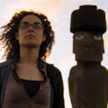I’m a Scientist is like school science lessons meet the X Factor! School students choose which scientist gets a prize of $1000 to communicate their work.
Scientists and students talk on this website. They both break down barriers, have fun and learn. But only the students get to vote.
This zone is the Organs Zone. It has scientists studying health and disease in various parts of our bodies. Who gets the prize? YOU decide!









Interesting question. And again, this isn’t my field…Yashar may have a better answer. But how we see colour has very little to do with the physical parts of our eyes, and much more to do with our brains. And yes, people may perceive colour differently. Just as people perceive smells differently (I hate the smell of lillies, and my mother loves them!), and tastes differently. I just read an interesting news story on this subject…you might enjoy it. https://www.bbc.co.uk/news/science-environment-14421303
0
Where’s Yashar with all these eye questions?
I know that sometimes my brother and I argue about what colour things are. He will often say something is red when i think it’s brown or pink. But we have the same colour eyes…. so i really have no idea.
What i do know is that some people are colour blind (mostly boys) and they are not really blind, but have problems with development of the part of the eye that recognises colour! But it’s not associated with eye colour i don’t think!!
0
Some of these didn’t show up in my feed initially. Only found them when going through again.
So colour blindness and eye colour are 2 different things. Eye colour refers to the colour of your iris, the “muscle” in front of your eye that helps focus the amount of light going into your eye. Answered a similar question so I’ll give you a similar response to see the iris in action.
The next time you’re in the bathroom, go up to the mirror, and look closely at your pupil (which is the dark circle in the middle of your iris/ coloured part). Then turn the light on still focusing on your pupil, you’ll see your iris working to narrow the pupil as the room gets brighter and less light is needed to go into your eye for you to see clearly! Very cool stuff 😉
Carina is also onto something interesting with her response, and helps answer the other part of your question. “Even though we call a colour the same name”, does everyone see it the same? Well that is a very complex question to answer! If you and your friend look at the same colour, and neither of you colour-blind, do you each perceive the colour differently? Well you can look at brain signals to try and guess whether one see’s it one way, whereas another sees it differently; but ultimately, we can’t tell for sure!
ALSO, we are taught what colours are called when we are young, so let’s say you teach a child to call the colour purple, red! See where I’m going with this?!?!
So back on topic, and to summarise. Eye colour is the colour of your iris, whereas colour blindness is to do with your retina (the back of your eye that “senses/sees” colour.
I’m going to have to cut down some of my answers by the looks of things. Most are really long! LOL
0
How we see colour is complicated. First, light passes into our pupil and reaches the retina at the back of our eye. In the retina there are cells that are sensitive to only certain types of light. There are blue, red and green cone cells. When these cells “see” colour they then send messages to the visual area of your brain, right at the back of your head. Your brain can then decide which colour you have just seen.
So to answer your question; the colour of your iris in your eye doesn’t change how you see a colour but language and the environment you grow up in will change the way you see and describe colours.
I often spend weekends with my friends 2 year old boy Kazuki who is Japanese. Just last weekend we argued over whether a cement truck was blue or green. To me, the truck was certainly green, but Kazuki was adamant that it was green. His dad later told me that in Japanese, the word for blue (青 ao) is often used for colours that English speakers would refer to as green, such as the colour of a traffic signal meaning “go”. So language can change how we see!
0
All the other scientists have given excellent explanations:
– eye colour is due to the pigment (like paint) of the layer of muscle around your pupil – the iris.
– perception or seeing colour is something we learned. As Emma put, we give labels/meaning to different things that help us identify them.
There is an interesting condition known as synesthesia in which people taste colour, numbers or words. This is an interesting area of neuroscience which suggests different parts of your brain are linked so we ‘perceive’ and sense or put meaning to things by using different senses. eg. the number “3” is yellow or the spelling of the word square is red.
0